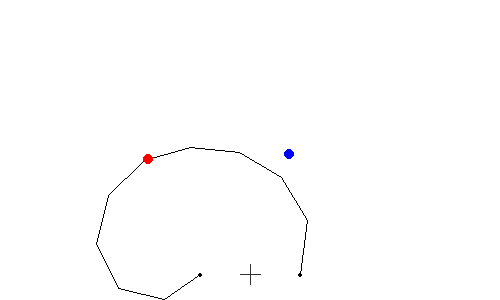Controlling Compliant-Mechanisms by Reinforcement Learning for Soft Robotics Applications
Title: Controlling Compliant-Mechanisms by Reinforcement Learning for Soft Robostics Applications
Project duration: 2022 – 2024
Research Area: Engineering and Business
Soft robotic approaches are of increased interest in various industrial domains. In this respect, compliant mechanisms offer a great cost-benefit ratio i.e. due to elimination of joints. The basic principle is based on elastic bending elements, which are forced to behave in a joint or hinge manner. This also enables safe human-machine interaction. The downside is a far more complicated controlling mechanism compared to traditional robots. With the help of Reinforcement Learning, complex control logic can be established. This work focuses on the demonstration of such control of a surrogate and real-world mechanism to point out difficulties and chances for future applications.
Aims
Based on Finite Element Modelling and Machine Learning a highly efficient surrogate model is developed. It has been shown, that the results are capable of predicting the real-world compliant deformation behaviour and vice versa. With this, it is possible to run large parameter studies on surrogate models and to test different scenarios, providing the ground truth to train the control algorithm based using Reinforcement Learning. Also, the effect of manufacturing tolerances and design changes can be considered. This project seeks to provide an efficient control algorithm and provide demonstrators in the real world and in the virtual world (surrogate).

Problem
Reinforcement Learning is heavily based on a great amount of trial-and-error iterations. It is also necessary to test different parameters to achieve the desired behaviour of the algorithm. Having a complex application where each iteration takes a significant amount of time (even a few seconds) limits and might even prevent the applicability such Reinforcement Learning approach.
Demonstrator
The demonstrators consists of a compliant mechanism made out of a single elastic element with both ends mounted on rotating actuators. After the training, the algorithm can successfully manipulate the motors and make the mechanism reach a target.

Publications
- Muschalski, L., Wollmann, J., Hornig, A., & Modler, N. (2022). Steuerung von Compliant-Mechanismen durch Reinforcement Learning. In M. Berger, B. Corves, & T. Lüth (Hrsg.), Getriebetagung 2022: Tagungsband, Chemnitz, 22.-23. September 2022 (S. 121-131). Logos Verlag, Berlin. https://doi.org/10.30819/5552.10
Figures:
Project_ILK-SoftRobotics_Agent.gif
Visualization of the ML-based surrogate control algorithm
Project_ILK-SoftRobotics_RealWorld.gif
Real-world demonstrator: compliant mechanism using a trained, Reinforcement Learning based control algorithm
Team
Lead
- Prof. Dr. Maik Gude
- Dr. Andreas Hornig
Team Members
- Lars Muschalski
Partners




